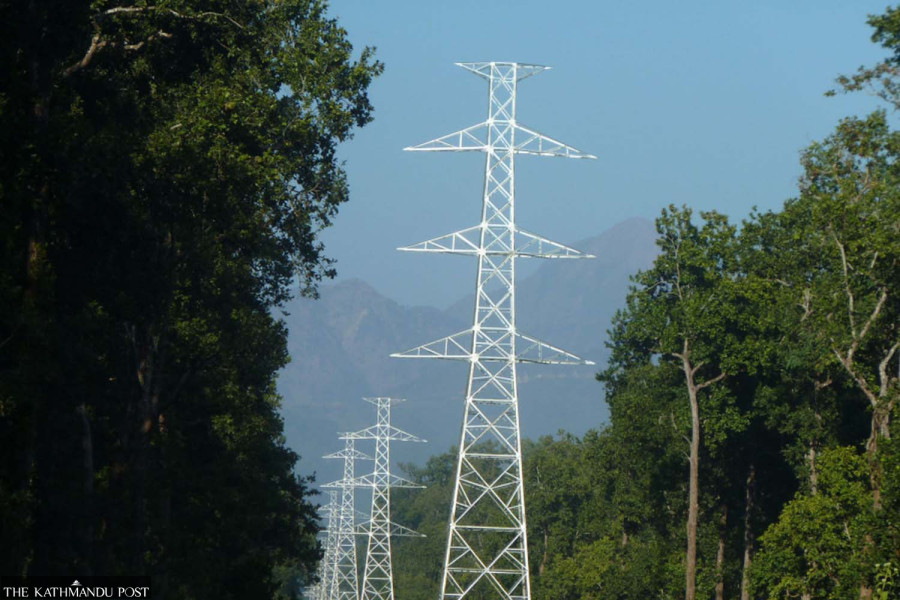Money
Nepal aims 100 percent electricity access by 2024
The country’s 92.52 percent population was connected to electricity by the end of the last fiscal year.
Pawan Pandey
Nepal Electricity Authority on Wednesday announced its plan to achieve 100 percent access to electricity within the next two years, well ahead of the target year of 2030 set by the Sustainable Development Goal 7.
Goal 7 is one of 17 Sustainable Development Goals set by the United Nations General Assembly in 2015. It aims to "ensure access to affordable, reliable, sustainable and modern energy for all”.
“The electricity access has reached 92.52 percent of the population in the country by the end of the last fiscal year ended mid-July,” said Kul Man Ghising, managing director of Nepal Electricity Authority, addressing the 37th anniversary of the utility.
“Every citizen will have access to electricity within the next two years.”
According to the power utility, 10 districts were added to the national grid in the last fiscal year. The number of fully electrified districts has now reached 42.
The number of electricity consumers of the power utility has reached 4.77 million, excluding 0.55 million who are served by rural community electrification.
Ghising said electricity could be a key medium for Nepal to prevent the depletion of foreign exchange reserves, citing record sales worth Rs3.88 billion to India in the last fiscal year.
In the last fiscal year, 735 MW of electricity, including from solar plants, was added to the national grid.
With the addition, the installed capacity of electricity increased to 2,189.6MW in 2021-22, which consists of 2,075.4MW of hydroelectricity, 54.8MW of solar power, 6.0MW of cogeneration and 53.4MW generated from thermal plants.
The power utility said it constructed 455 circuit kilometres of transmission lines of 66 kV and above in the last fiscal year. With this addition, Nepal now has 5,329 circuit kilometres of transmission lines.
Nepal’s electricity leakage was 25.78 percent six years ago. The power utility said it has been able to plug the leakage to 15.38 percent in the last fiscal year.
Nepal sold 364MW of electricity generated by six projects to India.
But it has been holding back from agreeing to buy electricity generated by the 456MW Upper Tamakoshi plant in Dolakha, which currently is Nepal’s largest hydropower plant.
The reason for the reluctance, according to insiders, is that the project’s civil works were carried out by a Chinese contractor.
While the officials applaud the achievement made in the past fiscal year, they also raised concerns regarding the welfare of the employees and the prospect of power trade in the coming days, particularly dependency on the Indian market.
“India has its own policy to buy electricity from Nepal. It’s not easy to sell electricity to India,” said Ram Kumar Thebe, coordinator of the CPN-UML affiliated Employees Union at the authority.
India has made importing Nepal’s electricity “a nationalist issue”, he said. “Trade should be based on the win-win situation through proper negotiations.”
Janardan Bhattarai, president of the ruling Nepali Congress-affiliated Employees Association, said that Nepal’s electricity trade should focus not only on the demand in neighbouring countries but also the South Asian region.
On the occasion, the independent power developers said bureaucratic hassles in every step have been hindering the growth of hydro projects in Nepal.
“It is not easy for the private sector to develop hydropower,” said Krishna Prasad Acharya, president of the Independent Power Producers’ Association, Nepal. “We have to visit seven ministries, 22 departments and 200 tables while working on a project.”
To increase domestic consumption, the government has accorded priority to promoting the use of induction stoves, electric vehicles (EVs) and establishing more factories, said Pampha Bhusal, the minister for energy.
“We will buy only EVs from now,” she said.
Nepal Electricity Authority made a profit of Rs16.16 billion in the last fiscal year, up from Rs6.1 billion in the previous fiscal.
Nepal has the potential to generate over 40,000 megawatts of hydroelectricity from the 6,000 rivers, rivulets and tributaries that charge down from the mountains to the plains, according to studies.




 8.12°C Kathmandu
8.12°C Kathmandu















